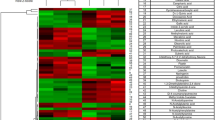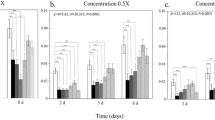Abstract
THAT three subjects so diverse as peat, hay-fever and pharmacognosy should have a common meeting-ground of fundamental importance appears somewhat surprising. The common ground is found in the morphological study of pollen. Pollen grains were first studied in detail about 250 years ago by Nehemiah Grew. On plate 58 of his "Anatomy of Plants"he gives drawings of the pollen of eleven different plants. Grew referred to pollen as the "Particles of the Attire", the "Attire"being the andrcecium of the flower. He discusses the use of pollen, noting in Book 1 of his treatise that "it is for Ornament and Distinction to us and for Food to other Animals", while in Book 2 he refers to the uses previously discussed as being the "Secondary Uses"and proceeds to say "the Primary and chief Use of the Attire is such as has respect to the Plant itself"and "that the Attire doth serve, as the Male, for the generation of the Seed"1. It is clear, therefore, that Grew had a good understanding of the nature and functions of pollen.
This is a preview of subscription content, access via your institution
Access options
Subscribe to this journal
Receive 51 print issues and online access
$199.00 per year
only $3.90 per issue
Buy this article
- Purchase on Springer Link
- Instant access to full article PDF
Prices may be subject to local taxes which are calculated during checkout
Similar content being viewed by others
References
Grew, N., "The Anatomy of Plants", 39 and 171 (1682).
Erdtman, G., "Pollen Analysis" (Chronica Botanica Co., 1943).
Blackley, C., through Quain's, "Dictionary of Medicine", 1902, article "Hay-Fever" (1873).
Wodehouse, R. P., "Pollen-Grains", (McGraw-Hill Co., 1935). "Hay-Fever Plants" (Chronica Botanica Co., 1945).
Wodehouse, R. P., "Hay-Fever Plants" (1945).
Hyed, H. A., and Williams, D. A., "Studies in Atmospheric Pollen I", New Phytologist, 43, 49 (1944).
Hyed, H. A., and Williams, D. A., "Studies in Atmospheric Pollen II", New Phytologist, 44, 83 (1945).
Hanbury, J. C., Private communication (1946).
Gibson, A. J., and Bossbach, A., "Preparing Allergenic Solutions", J. Amer. Pharm. Assoc., 245 (1945).
Loveless, M. H., "Allergenic Solutions", Amer. Prof. Pharm., 8, 565, 631 (1942).
Lang, C. H., "Investigations of the Pollen of the Malvaccæ", J. Roy. Micro. Soc., 57, 75, (1937).
Lee, A. Bolles, "Microtomists' Vade-Mecum", 241 (1913).
Zander, E., "Beiträge zur Herkunftsbestimmung bei Honig", "Pollengestaltung und Herkunftsbestimmung bei Blutenhonig" (Berlin, 1935).
Wallis, T. E., "Study of Pollen", Pharm. J. , 29 (January 11, 1947).
Striking examples of the use of this method are given by J. Pryce-Jones, Proc. Linn. Soc., 164 (January 1944).
Wallis, T. E., "Practical Pharmacognosy", fourth edition, 181 (1943).
Wallis, T. E., "Use of Lycopodium in Quantitative Microscopy", Pharm. J. 103, 75 (1919).
Author information
Authors and Affiliations
Rights and permissions
About this article
Cite this article
WALLIS, T. Peat, Hay-Fever and Pharmacognosy. Nature 159, 525–527 (1947). https://doi.org/10.1038/159525a0
Issue Date:
DOI: https://doi.org/10.1038/159525a0
Comments
By submitting a comment you agree to abide by our Terms and Community Guidelines. If you find something abusive or that does not comply with our terms or guidelines please flag it as inappropriate.



